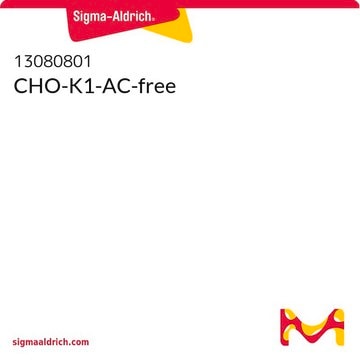CHOK1
CHOZN® CHO K1 Host Cell Line
Suspension-adapted in CD media
About This Item
Produits recommandés
Description
CHOK1 cell line derived from ECACC CHO K1
Niveau de qualité
Conditions d'expédition
dry ice
Température de stockage
−196°C
Catégories apparentées
Description générale
Origine de la lignée cellulaire
Forme physique
Informations légales
Code de la classe de stockage
10 - Combustible liquids
Classe de danger pour l'eau (WGK)
WGK 3
Point d'éclair (°F)
Not applicable
Point d'éclair (°C)
Not applicable
Certificats d'analyse (COA)
Recherchez un Certificats d'analyse (COA) en saisissant le numéro de lot du produit. Les numéros de lot figurent sur l'étiquette du produit après les mots "Lot" ou "Batch".
Déjà en possession de ce produit ?
Retrouvez la documentation relative aux produits que vous avez récemment achetés dans la Bibliothèque de documents.
Articles
Understand how considerations such as DMSO concentrations and freezing techniques are key in the successful implementation of high cell density cryopreservation (HCDC).
Cellvento® and EX-CELL® CHO cell culture media and feeds, optimized for monoclonal antibody & recombinant protein production in fed-batch & perfusion
Contenu apparenté
Learn more about cell line development and the relevant products you need for this process.
This page describes the use of a small-scale perfusion bioreactor with integrated microfluidic flow control and sensor technologies to predict large-scale processes.
Notre équipe de scientifiques dispose d'une expérience dans tous les secteurs de la recherche, notamment en sciences de la vie, science des matériaux, synthèse chimique, chromatographie, analyse et dans de nombreux autres domaines..
Contacter notre Service technique




